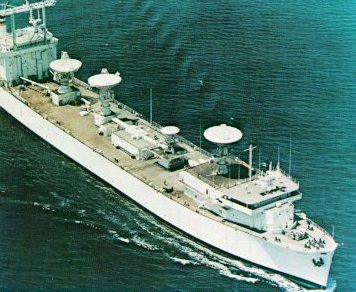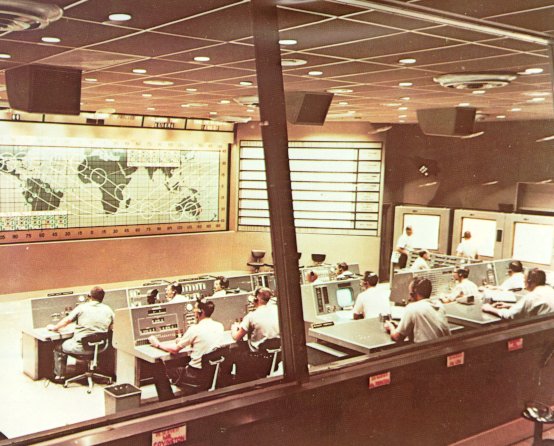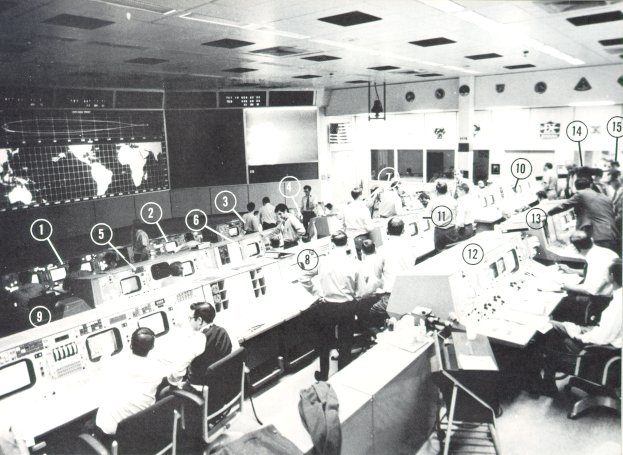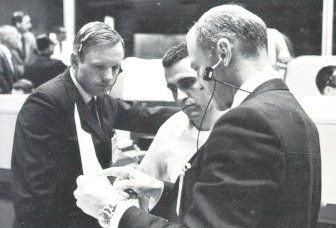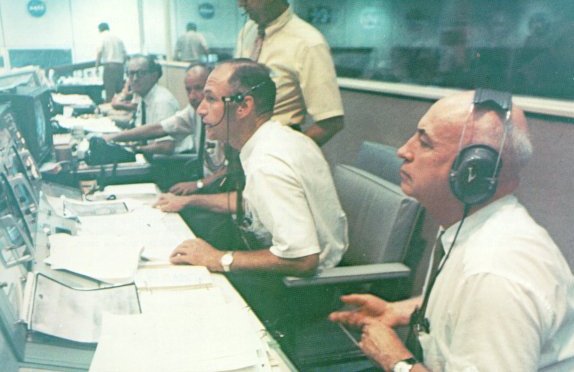By Apollo, with three men in two spacecraft at lunar
distances, Mission Control had grown.
An array of specialists manned the consoles during an Apollo mission.
Key numbers above identify the locations of flight controllers. 1 was
the Booster Systems Engineer, responsible
for the three Saturn stages. 2 was the Retrofire Officer,
keeping continuous track of abort and return-to-Earth options. 3 was
the Flight Dynamics Officer, in charge of monitoring trajectories
and planning major spacecraft maneuvers; he also managed onboard
propulsion systems. 4 was the Guidance Officer, who watched
over the CSM and LM computers and the abort guidance system. In
the second row, 5 was the Flight Surgeon, keeping an eye on the
condition of the flight crew. At 6 was the Spacecraft Communicator,
an Astronaut and member of the support crew, who sent up the
Flight Director's instructions. (He was usually called CapCom, for
Capsule Communicator, from Mercury days.) 7 concerned CSM and
LM systems, including guidance and navigation hardware; and electrical,
environmental, and communications systems. After Apollo 11, all communications
systems were consolidated as a separate task. On the
next row in the middle was 8, the Flight Director, the team leader. 9
was the Operations and Procedures Officer, who kept the team - in and
out of the Center - working together in an integrated way. 10 was
the Network Controller, who coordinated the worldwide communications
links. 11 was the Flight Activities Officer, who kept track of
flight crew activities in relationship to the mission's time line. 12 was
the Public Affairs Officer who served as the radio and TV voice of
Mission Control. 13 was the Director of Flight Operations; 14 the Mission
Director from NASA Headquarters; and 15 the Department of Defense
representative. During activity on the lunar surface an Experiments
Officer manned the console at 1 to direct scientific activities and relay
word from the science team.
|


